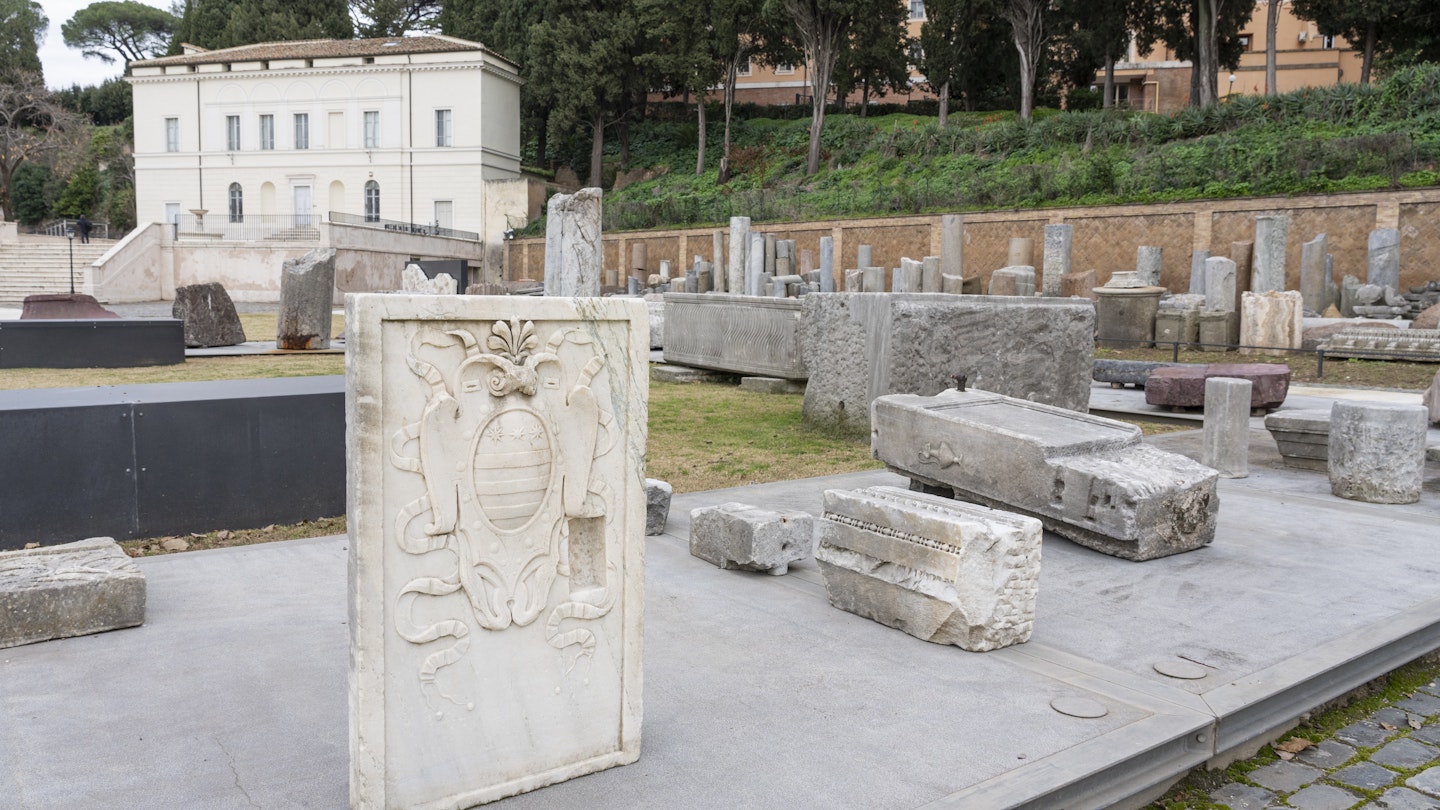Discover the Archaeological Park of Celio and the Forma Urbis Museum in Rome
Beside the magnificent Colosseum, a new archaeological park and museum have recently opened their doors to eager visitors in Rome.
If you’ve already marveled at the Colosseum and explored the historic ruins of the Roman Forum, wondering what’s next to delve into? The Archaeological Park of Celio and the Museum of the Forma Urbis offer an immersive experience that allows you to step back into Ancient Rome’s streetscapes and architectural wonders.

Museum of the Forma Urbis
At the core of this experience lies the opportunity to walk upon an original marble map of the Eternal City. This colossal marble plan, known as the Forma Urbis Romae, dates back to the reign of Emperor Septimius Severus, with engravings etched between 203 CE and 211 CE. Originally displayed vertically in the Temple of Peace in the Roman Forum, this monumental map measures approximately 18m by 13m (59ft by 43ft) and was rediscovered in 1562 after being hidden for centuries.
Today, it is meticulously preserved under glass, positioned horizontally to allow visitors to experience the sensation of wandering through the ancient streets of Rome. Giovanni Battista Nolli’s 1748 Pianta Grande map is superimposed on this remarkable artifact, enhancing your journey through these historic points of interest.

With transparent floors underfoot, visitors can traverse the ancient cobblestones, encountering iconic landmarks such as the Colosseum, Ludus Magnus, and the Sacred Area of Largo Argentina. Though only approximately a tenth of the map remains intact, this marks the first public display of these fragments in nearly a century.
The Forma Urbis spans 150 marble slabs, intricately illustrating temples, baths, basilicas, and neighborhoods. It was designed more as a tribute to the architectural grandeur of the city rather than as a practical navigational tool.
Archaeological Park of the Celio
Simultaneously, the newly opened Archaeological Park of the Celio showcases numerous architectural relics meticulously curated from 19th-century excavations. This includes the foundational remains of the Divo Claudio, or the Temple of Claudius, dating back to the 1st century CE. The park features various burial grounds, public monuments, and sacred areas.
The layout of the park has been arranged thematically, providing an open-air museum experience. Among the ruins is a grand tomb from the 2nd century BCE, belonging to Servius Sulpicius Galba, a member of one of Rome’s most influential families. In contrast, a more modest narrative is told through the gravestone of Pamphilia, who worked as a hairstylist.
Within the park’s limits, visitors will also find the Casina del Salvi, which is set to resume its original function as a coffee house for all who explore this historical site.
Plan Your Visit
This development is part of a larger initiative aimed at enhancing Rome’s historic hills. Both the new park and museum form integral components of the city’s New Archaeological Walk, seamlessly connecting ancient Roman sites around the Roman Forum, the Colosseum, Terme di Caracalla, and Circo Massimo.
The archaeological park welcomes visitors free of charge daily, while the museum opens its doors every day except Mondays, with admission tickets priced at €9 ($10).




